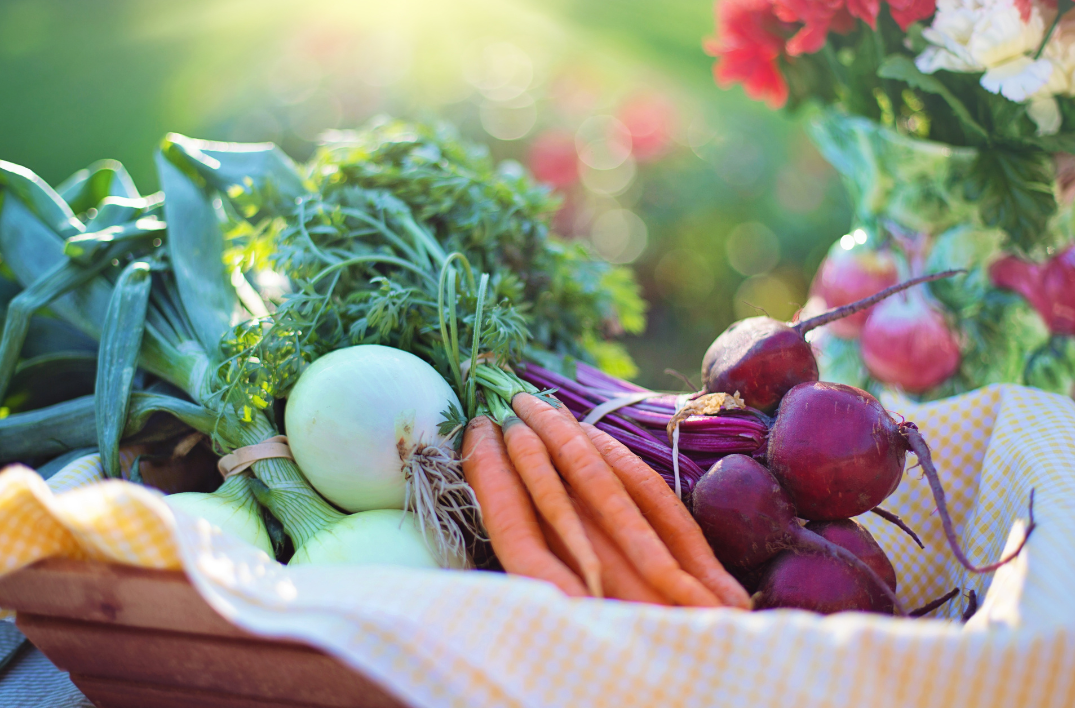Eat with the Seasons: Embrace the Flavors & Benefits of Spring's Bounty
Spring's arrival brings a wave of renewal and anticipation for the sun-drenched days ahead, prompting a shift in our nutritional and well-being routines.
Personally, I find myself gravitating away from the hearty warmth of soups and stews, embracing the crisp freshness of spring salads, delicate broth-based risottos, and lighter fare instead. As spring awakens, I find myself drawn to the lighter textures of arugula and asparagus, a welcome departure from the richness of winter's Brussels sprouts and root vegetables.
In tandem with this culinary transition, I also adjust my beverage choices, trading my morning coffee for the soothing embrace of green tea. With the lengthening daylight hours, I carve out time for post-dinner strolls, relishing in the opportunity to soak up the revitalizing energy of the season.
Yet, perhaps the most significant change with the turn of the seasons is reflected in my grocery shopping habits. As I peruse the aisles, I am mindful of selecting produce that mirrors the vibrancy of spring, opting for freshly harvested fruits and vegetables that embody the essence of the season.
The Seasonal Food Guide is a great resource for identifying what is in season in your area.
Eating seasonal fruits and vegetables offers several benefits:
Nutrient density: Seasonal produce is often harvested at its peak ripeness, which means it contains higher levels of vitamins, minerals, and antioxidants compared to produce that's been harvested prematurely and transported long distances.
Fresher taste: Seasonal fruits and vegetables tend to taste better because they are harvested closer to the time they're sold and consumed. This freshness enhances the flavor and texture of the produce.
Cost-effectiveness: When fruits and vegetables are in season, they are generally more abundant, which often leads to lower prices. Buying seasonal produce can, therefore, be more budget-friendly.
Environmental sustainability: Eating seasonal produce supports local farmers and reduces the carbon footprint associated with transportation and storage. By consuming food that is grown locally and in season, you're reducing the energy required for transportation and the need for artificial preservation methods.
Variety and culinary creativity: Embracing seasonal eating encourages you to diversify your diet, as different fruits and vegetables come into season throughout the year. This variety not only ensures a broader range of nutrients but also inspires creativity in the kitchen as you experiment with new recipes and flavors.
Connection to nature: Eating seasonally helps reconnect people with the natural rhythms of the Earth and the changing seasons. It fosters a deeper appreciation for nature's cycles and encourages a more mindful approach to food consumption.
Overall, consuming seasonal fruits and vegetables supports both personal health and environmental sustainability while promoting local economies and culinary enjoyment.
WAYS TO TAKE ACTION
Look at The Seasonal Food guide and choose 2-3 new fruits and/or vegetables to bring into your weekly meals
Read the label on the produce to see where it was grown and try to stay as local as possible
Consider shopping at your local farmer's markets for the freshest produce or getting weekly deliveries from a local farm
Consider what you love about spring and make sure to schedule those activities into your weeks before time passes by

